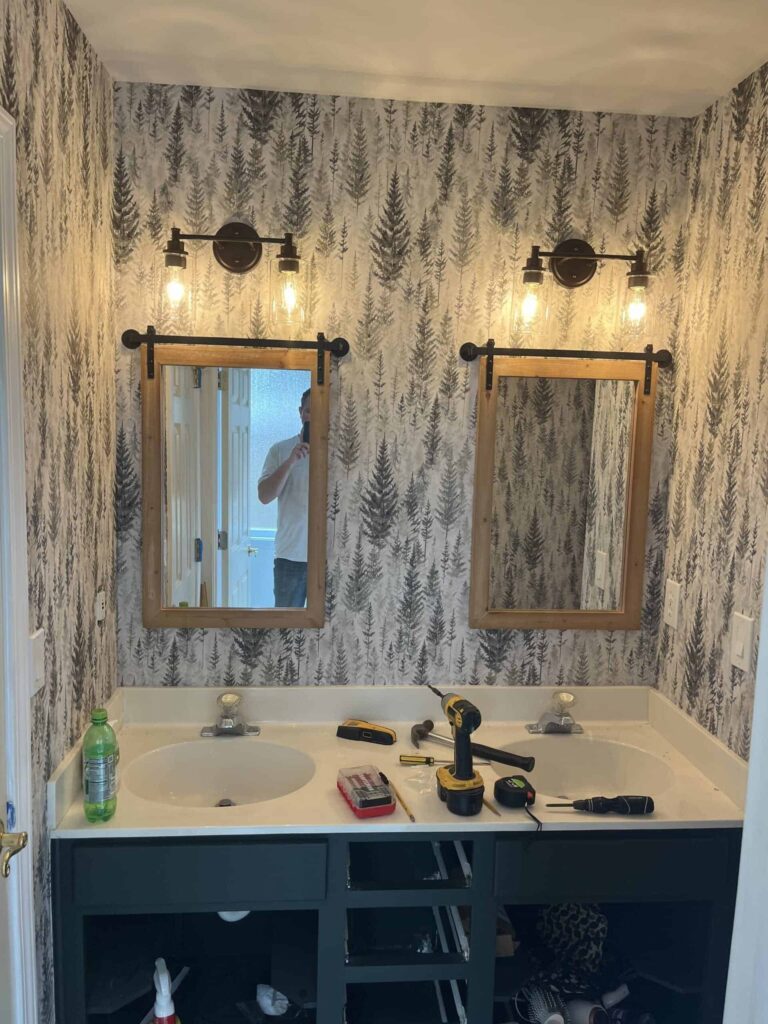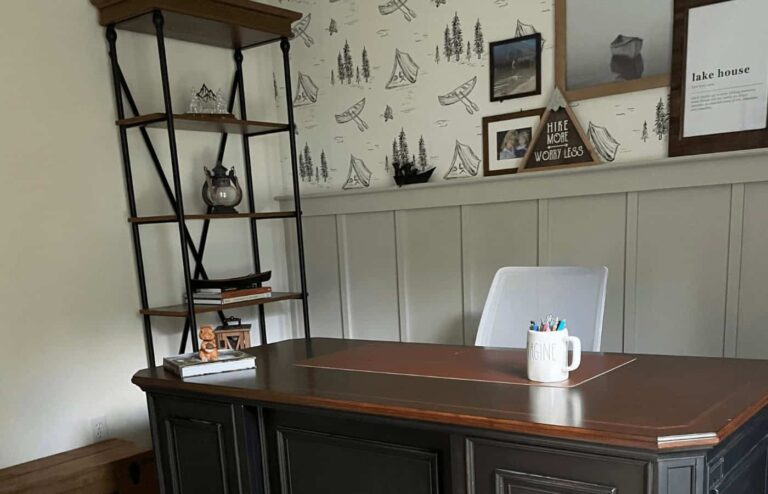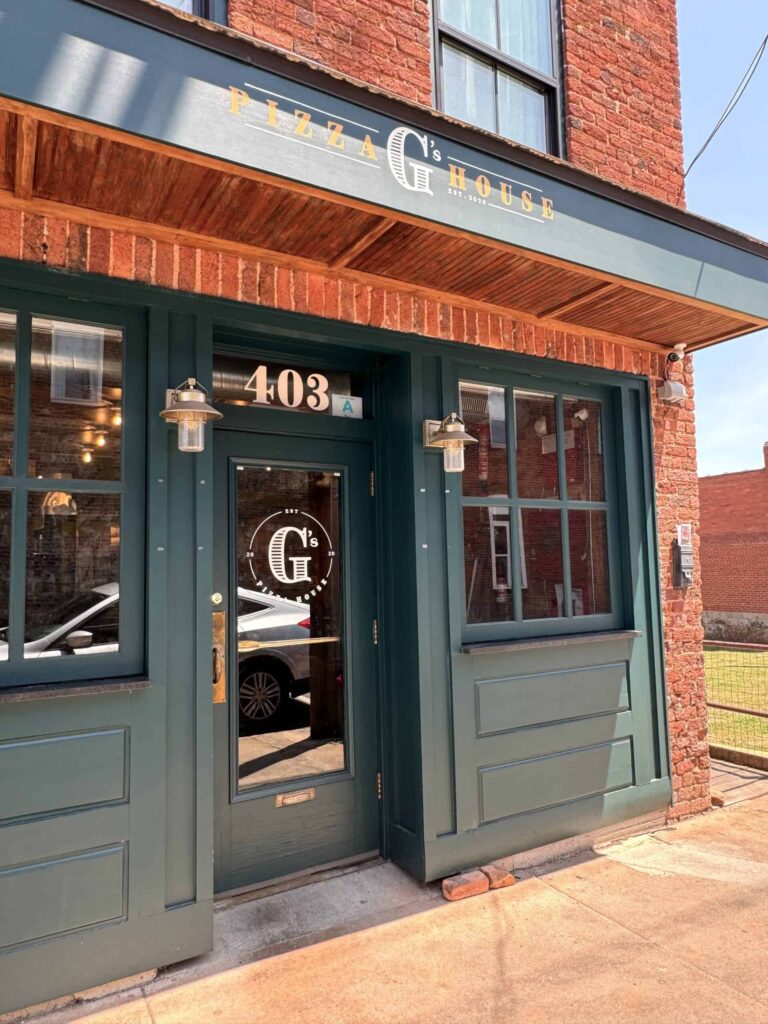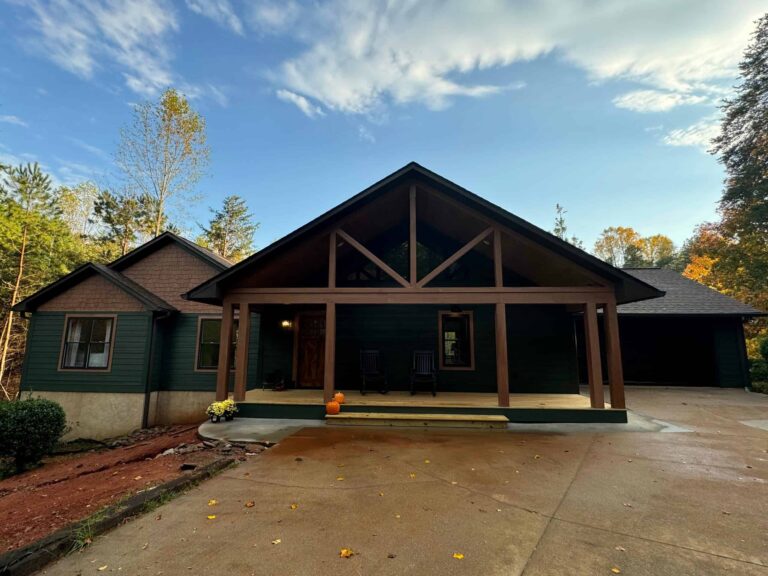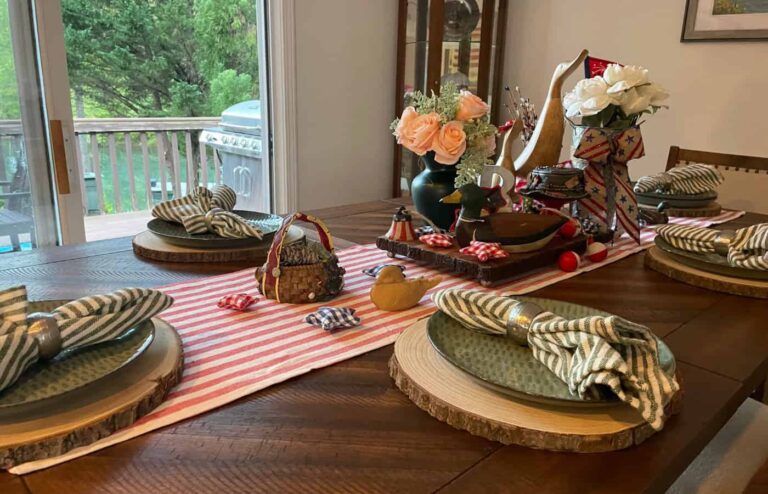I had this big, ambitious vision to transform our little ranch into a rustic, Adirondack-inspired home. I knew transforming our house had to be a priority because I was embarrassed by the way the house looked. Call it superficial, but I am just being real.
The house is in the perfect, dare I say DREAM location. But the house? Was not such a dream. It had what some might call “potential,” but to me, it was just plain ugly, small, and run down.
For starters, the couch was practically in the kitchen. The ramp leading to the front door was crooked and falling apart, and speaking of the front door—it was this awful shade of orange that made me cringe every time I saw it.
I knew this house could be something special, but making it happen was going to cost a lot of money. So, after a year of dreaming and tackling some DIY projects to make it more livable, we finally decided to rip off the band-aid and turn this house into the home we envisioned.
Now, that all sounds nice and easy, but let me tell you—it was overwhelming. Where do you even start with a house renovation this big? If you’re feeling the same way, I’m going to walk you through how we did it and share what I’ve learned, so you can avoid some of the mistakes we made. Oh, and I swear I’m being transparent, so if you just want to know the numbers- I have included those too.


Step 1: Setting the Budget (and Figuring Out How to Pay for It)
The first thing we did was figure out what we were comfortable spending. When you’re looking at a big renovation, there are a few options to consider for financing:
- Cash on hand: If you’ve saved up, great! But for a big project, that might not be enough.
- Home Equity Line of Credit (HELOC): This lets you borrow against the equity in your home.
- A combination of both: Sometimes, mixing and matching funding sources can give you more flexibility.
This is where having a good relationship with a mortgage lender can really pay off. My go-to is Anna Smith. She’s helped us with several homes and is always the first person I call when I’m about to dive into a project like this. She walked us through options to help us decide if it made sense to use cash on hand or if we should consider borrowing.
Once you’ve figured out what financing option makes sense for your situation and set a budget you’re comfortable with, it’s time to see if your renovation dreams fit within that budget. For us, the goal was to hit as much of our “wish list” as possible while leaving some room for those unexpected costs that always seem to pop up. Our target? $250,000. We had no idea if it was doable, but that’s what we needed to aim for if we were going to take on this project.
Our Must-Haves:
- A bigger living room
- A brand-new kitchen
- A new roof
- New windows and doors
- The rustic Adirondack lake house vibe we were dreaming of
- And, of course, a porch


Step 2: Finding the Right Team to Renovate Your Home
Once we had our financing secured and our wish list in hand, it was time to find the team that would either make our dreams come true—or crush them. In hindsight, and after learning the hard way, I would have done this part differently.
We started by reaching out to all kinds of contracting teams, from small companies to large ones. Here’s what I’ve learned along the way:
- Don’t pay for a quote or design mock-up: Any reputable contractor should provide this for free.
- If they come with a design team or architect, expect a higher price tag: While it can be worth it, be prepared to pay more. Personally, an interior designer is not in our budget.
- Everyone will say they can do it: Ask specific questions about their team, timelines, and whether they deliver on time. We had one company tell us the project would take 10 months! (insert head-exploding emoji.)
- Trust your gut: If something feels off, it probably is.
- Get a solid quote: If a contractor gives you a range as wide as $225,000 to $500,000, that’s a red flag. How do you budget for that? And yes, we actually were given that range… obviously, they aren’t our contractors
Given the size of our project (the roof was literally coming off), what I would have done differently is start with an architect from the very beginning. This would’ve allowed contractors to bid on actual plans rather than the ideas floating around in my head.

Current Status of Dream Home Renovation
So, here’s where we’re at. Let’s play a little game: Based on what we’ve accomplished so far, how much of our budget do you think we’ve spent? Don’t worry—I’ll tell you at the end, but take a guess first! And while you’re at it, let me know if you think we’ll actually finish this project within our $250,000 budget.
Here’s what we’ve done so far:
- Hired an architect to draw up plans
- Had contractors working at the house for seven weeks
- Removed the old deck
- Poured concrete footings for the addition (front and back)
- Framed out the addition
- Removed the old roof and installed a new one
And so far, we’ve spent just over $72,000. Do you think we can finish within budget?
For real-time updates, be sure to follow along on Instagram!

